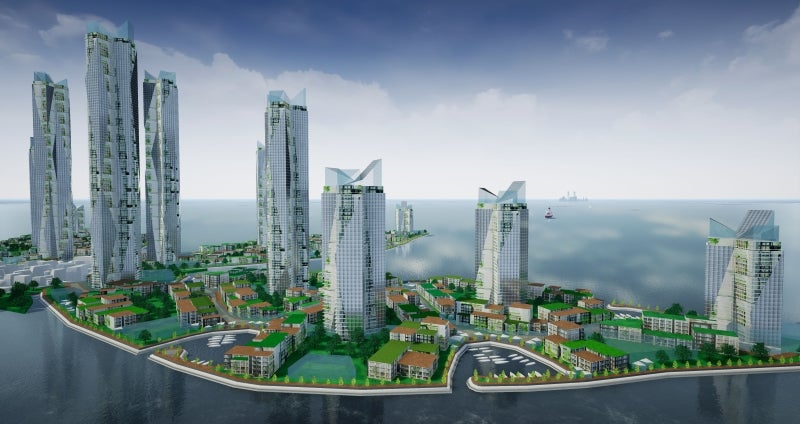
It seems there’s no limit to Peter Vesterbacka’s ambition. After spending six years as an executive for Espoo-based Angry Birds game developer Rovio and with several successful start-up conference businesses under his belt, the Finnish serial entrepreneur has for the last few years set his sights on a lofty goal: to build a 100km rail tunnel linking Helsinki in Finland with Estonian capital Tallinn. The link would run under the Gulf of Finland, which separates the two cities, making it the longest undersea tunnel in the world.
The idea of an undersea rail link between Tallinn and Helsinki is hardly brand new; Finnish geologists first studied the possibility of a tunnel back in 1993, but the concept has remained firmly on the drawing board for more than two decades. In 2014, the two cities commissioned a pre-feasibility study for a tunnel – dubbed the ‘FinEst Link’ – followed by a full feasibility study, which was published in February 2018.
The fundamentals of the project, the cost of which is estimated at up to €20bn, seem strong. According to the findings of the cities’ Helsinki-Tallinn tunnel task force, around nine million passengers travelled between the cities by ferry in 2017. This could increase to 23 million by 2050 if the tunnel is built, with 12.5 million annual passengers travelling by tunnel and 10.5 million ferry passengers.
In terms of freight, the tunnel is projected to increase cargo transport between the cities from 3.7 million tonnes in 2017 to eight million, split between the tunnel and shipping. And the prospect of replacing weather-dependent two-hour ferry journeys with a 20-minute high-speed rail transfer is certainly one that will generate long-term value for the entire region.
Vesterbacka’s backing: supercharging the FinEst Link
Vesterbacka set up FinEst Bay Area Development as a working group for the project in 2016, and since then he has been hard at work to convince both Finnish and Estonian authorities that his vision for the project, not to mention its financing, is the right way to go.
“This tunnel will make Finland and Estonia extremely connected and competitive,” Vesterbacka told Forbes in November last year. “Right now our travel methods to Tallinn are not optimal enough; we should do better.”
The main difference between the Vesterbacka-backed vision for the FinEst tunnel and that of the publicly commissioned feasibility studies is the timeline for its completion. While the task force’s proposed schedule would see construction take around 15 years, with the tunnel ready to open by 2040, Vesterbacka has said it can be ready for operation by the end of 2024.
“We cannot spend five or six years on planning,” he told Estonian newspaper Postimees last year. “We will do a lot of things simultaneously.”It’s unclear whether compressing the project timescale to the degree that Vesterbacka proposes is feasible, but simultaneous working is indeed at the heart of FinEst Bay Area’s super-charged tunnel-building plan. Along the rail service’s proposed route from Helsinki Vantaa Airport to Tallinn Airport on the other side of the gulf, two offshore stops are proposed. These stops will be at two artificial islands, a larger one 15km off the coast of Finland and a smaller development offshore Estonia, both built using the excavated rock from the tunnelling project.
As well as providing emergency stop-off points for passengers and forming economic and cultural hubs in themselves, these islands will also provide staging points to carry out simultaneous tunnelling – from Finland and Estonia, and also in both directions from each of the artificial islands.
“This gives us drilling in six directions with 12 tunnel-drilling machines at any given time,” Vesterbacka said in an interview published on FinEst Bay Area’s website. “That actually lets us complete the physical drilling in something between a year and two [years].”
Private financing for the Helsinki-Tallinn tunnel
Vesterbacka’s vision for the project has yet to secure backing from the Finnish and Estonian national governments, or from the European Union. This has led to the slightly odd situation of the public development scheme and the private FinEst Bay Area plan running concurrently, bringing an element of uncertainty concerning where the responsibility for the tunnel’s design and construction will fall.
FinEst Bay Area’s project has gained extra credibility due to the floodgates of private financing it has opened. In December, Dubai-based construction firm ARJ Holding invested €100m in the project, and in early March FinEst Bay Area signed a provisional memorandum of understanding with China’s Touchstone Capital Partners to provide €15bn, which would cover the vast majority of the project’s cost.
A third of Touchstone’s financing will come as private equity, giving the group a minority stake in the project, while the remaining two thirds will be provided in debt. The investment fits with China’s goals under the Belt and Road initiative, which seeks to connect the country to the Middle East, Europe and Africa by various transport routes.
The influx of external investment generated by Vesterbacka’s team will almost certainly improve the tunnel’s attractiveness to the Finnish and Estonian governments, although he has noted that the project is still looking for European partners. The tunnel could form the northern end of the Rail Baltica project to improve links between the Baltic nations and Europe’s core rail network. The availability of private financing will appeal to public authorities, which have admitted that the project – whose budget is one and a half times the size of Estonia’s national budget – would be impossible without private sector backing.
“Talking about tunnel financing, it will mean involving private capital, and I hope we can secure EU funding in the future,” Estonian Prime Minister Jüri Ratas told Radio Kuku last year. “Building the tunnel only on the two countries’ dime is out of the question.”



